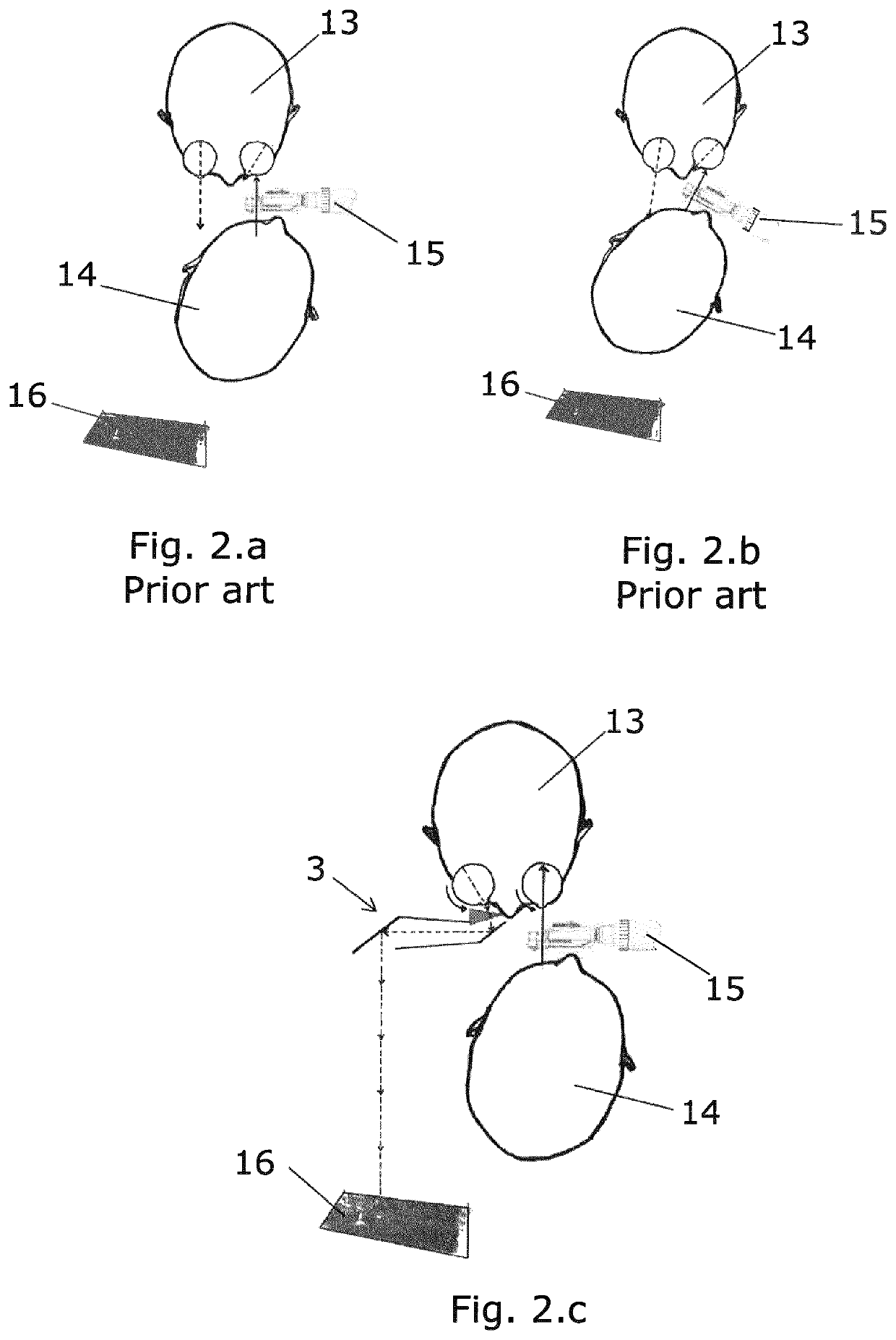Method of examining an eye of a squinting person by use of a periscopic device and such a periscopic device
a periscopic device and eye technology, applied in the field of eye examination of an inwardly squinting person, can solve the problems of less efficient and sometimes impossible examination, complicated examination, and children's difficulty in concentrating and focusing the eye in one direction for a long tim
- Summary
- Abstract
- Description
- Claims
- Application Information
AI Technical Summary
Benefits of technology
Problems solved by technology
Method used
Image
Examples
Embodiment Construction
[0044]FIG. 1 shows schematically a top view of the principle of a first embodiment of the present invention used for examining an eye of a person with an inwardly squinting eye (esotropia). In the example shown in the figure, the left eye 1 looks straight ahead while the right eye 2 squints inwards. When the left eye 1 is to be examined, the periscopic device 3 is placed in front of the right eye 2 which thereby is enabled to focus on e.g. a film at a distance indicated by D in the figure. Hereby it will be easier to keep e.g. a small child still during the examination.
[0045]The periscopic device 3 comprises a tube 4 which can be used to hold the periscopic device 3 by the person being examined or a helper, such as a parent. In the embodiment in FIG. 1, the tube is shown with a very simple geometry for illustrative purposes only. The periscopic device may have other geometries and comprise a housing which is easy to hold, such as having the geometry shown in FIG. 6. A first mirror 5...
PUM
 Login to View More
Login to View More Abstract
Description
Claims
Application Information
 Login to View More
Login to View More - R&D
- Intellectual Property
- Life Sciences
- Materials
- Tech Scout
- Unparalleled Data Quality
- Higher Quality Content
- 60% Fewer Hallucinations
Browse by: Latest US Patents, China's latest patents, Technical Efficacy Thesaurus, Application Domain, Technology Topic, Popular Technical Reports.
© 2025 PatSnap. All rights reserved.Legal|Privacy policy|Modern Slavery Act Transparency Statement|Sitemap|About US| Contact US: help@patsnap.com



